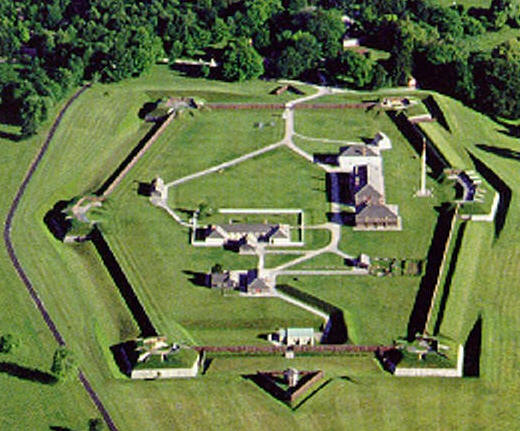|
Fort
George National Historic Site of Canada
Niagara-On-the-Lake
Oct 02, 05
 In
1796, the British complied with the terms of the 1783 Treaty of Paris,
which had granted Fort Niagara to the United States. To protect their
interests in Upper Canada, the British set work immediately to
construct a fort across the Niagara River. Control of the river supply
route was essential to the survival of the forts west of the Niagara
region. By 1802, Fort George had been completed and became
headquarters for the British army, local militia and the Indian
Department. In
1796, the British complied with the terms of the 1783 Treaty of Paris,
which had granted Fort Niagara to the United States. To protect their
interests in Upper Canada, the British set work immediately to
construct a fort across the Niagara River. Control of the river supply
route was essential to the survival of the forts west of the Niagara
region. By 1802, Fort George had been completed and became
headquarters for the British army, local militia and the Indian
Department.
The imposing new fort stood guard over
transportation on the Niagara River and protected Navy Hall, a vital
warehouse and wharf facility. It was a substantial installation,
boasting six earthen and log bastions linked by a wooden palisade and
surrounded by a dry ditch. Inside the walls, the Royal Engineers
constructed a guardhouse, log blockhouses, a hospital, kitchens,
workshops, barracks, an officers' quarters, and a stone powder
magazine. The superbly designed magazine survives still.
During the War of 1812, Fort George
served as the headquarters for the Centre Division of the British
Army. These forces included British regulars, local militia,
aboriginal warriors, and Runchey's corps of freed slaves. Major
General Sir Isaac Brock, the saviour of Upper Canada served here until
his death at the Battle of Queenston Heights in October 1813. Fort
George was destroyed by American artillery fire and captured during
the Battle of Fort George in May 1813. The U.S. forces used the fort
as a base to invade the rest of Upper Canada, however, they were
repulsed at the Battles of Stoney Creek and Beaver Dams. After a seven
month occupation by, the fort was retaken in December and remained in
British hands for the remainder of the war. |